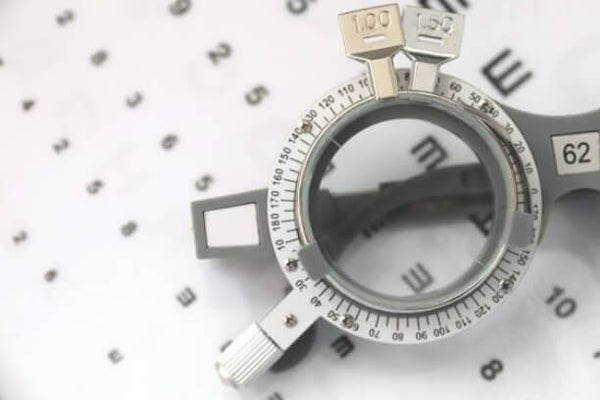
Decoding Optometry Prescriptions: A Guide to Understanding Your Eyewear Data
When you receive an optometry test, your doctor will provide you with an optometry prescription. However, many people find these prescriptions confusing, filled with numbers and terms that resemble a secret code. It's crucial to understand and correctly interpret your optometry prescription to gain insight into your vision and ensure you receive the right eyeglass prescription. In this article, we will delve into the details of optometry prescriptions, helping you gain a better understanding of the data and how to apply it effectively.
Interpreting an Optometry Prescription
1.Spherical Lens Degree
Spherical lenses refer to the refractive condition of nearsightedness or farsightedness. This is indicated by the letter S or the abbreviation SPH. Spherical lenses are used to correct these refractive errors in nearsighted or farsighted eyes.
If there is a negative sign (-) preceding the sphere, it indicates myopia (nearsightedness). Conversely, if there is a positive sign (+), it indicates hyperopia (farsightedness). The degree of spherical lenses (for myopia or hyperopia) is typically represented by the letter "D," with one "D" equivalent to 100 degrees of refraction.
For example, if your prescription shows "OD S: -1.00D," it means there is 100 degrees of myopia in your right eye. Similarly, "OS S: +1.00D" signifies 100 degrees of hyperopia in your left eye.
2.Cylinder Lens Degree
Cylinder lenses are used to correct astigmatism and are denoted by the letter C or the abbreviation CYL. These lenses address the specific needs of astigmatic eyes. A negative sign (-) before the cylinder reading indicates myopic astigmatism. The degree of astigmatism is typically represented by the letter "DC," with one "DC" equivalent to 100 degrees of astigmatism.
For instance, if your prescription reads "OD CYL: -1.00DC," it means there is 100 degrees of myopic astigmatism in your right eye.

3.Lens Axis
The lens axis indicates the direction of refractive power for the astigmatic cylinder lens. It is represented by the letter A or the abbreviation AXL and is expressed in degrees ranging from 0 to 180. The axis and cylinder degrees work together to describe the nature and direction of astigmatism.
4.Pupillary Distance
Pupillary Distance (PD) refers to the measurement between your pupils and is expressed in millimeters (mm). When crafting your eyeglasses, this value helps determine the optical center of the lenses. Accurate positioning of the optical center is vital to prevent discomfort when wearing glasses. Therefore, Pupillary Distance is a critical piece of data.
5.Addition of Optical Number
It is an optical number that corrects for the loss of near vision (presbyopia), and is expressed by the acronym ADD. This value is usually found in prescriptions for presbyopic lenses and indicates an additional diopter for close reading. However, ADD is usually found only in multifocal lenses (such as progressive multifocal lenses) or bifocal lenses for people who need correction for both distance and near vision. For people who only need correction for distance or nearsightedness, plus lenses are generally not available. Extra-optical numbers are usually indicated by a "+ (plus sign)" and are measured in degrees (D).
In addition to the optometric data mentioned above, some simpler data includes O.D/R for the right eye and O.S/L for the left eye. If you have any questions or doubts regarding your prescription, it is advisable to consult an optometrist or NextPair for detailed guidance.

The Connection Between Online Dispensing and Optometry Prescriptions
The data within your optometry prescription forms the foundation of your online prescription. Accurate information regarding spherical lens power, cylindrical lens power, axial position, and plus-optical power allows us to customize your eyewear to meet your vision correction needs. This data also enables us to recommend the most suitable eyewear and lens options, such as high-definition lenses, color-changing lenses, anti-blue light lenses, and anti-glare lenses.
 titanium eyewear
titanium eyewear

 get discount
get discount loyalty program
loyalty program help online
help online